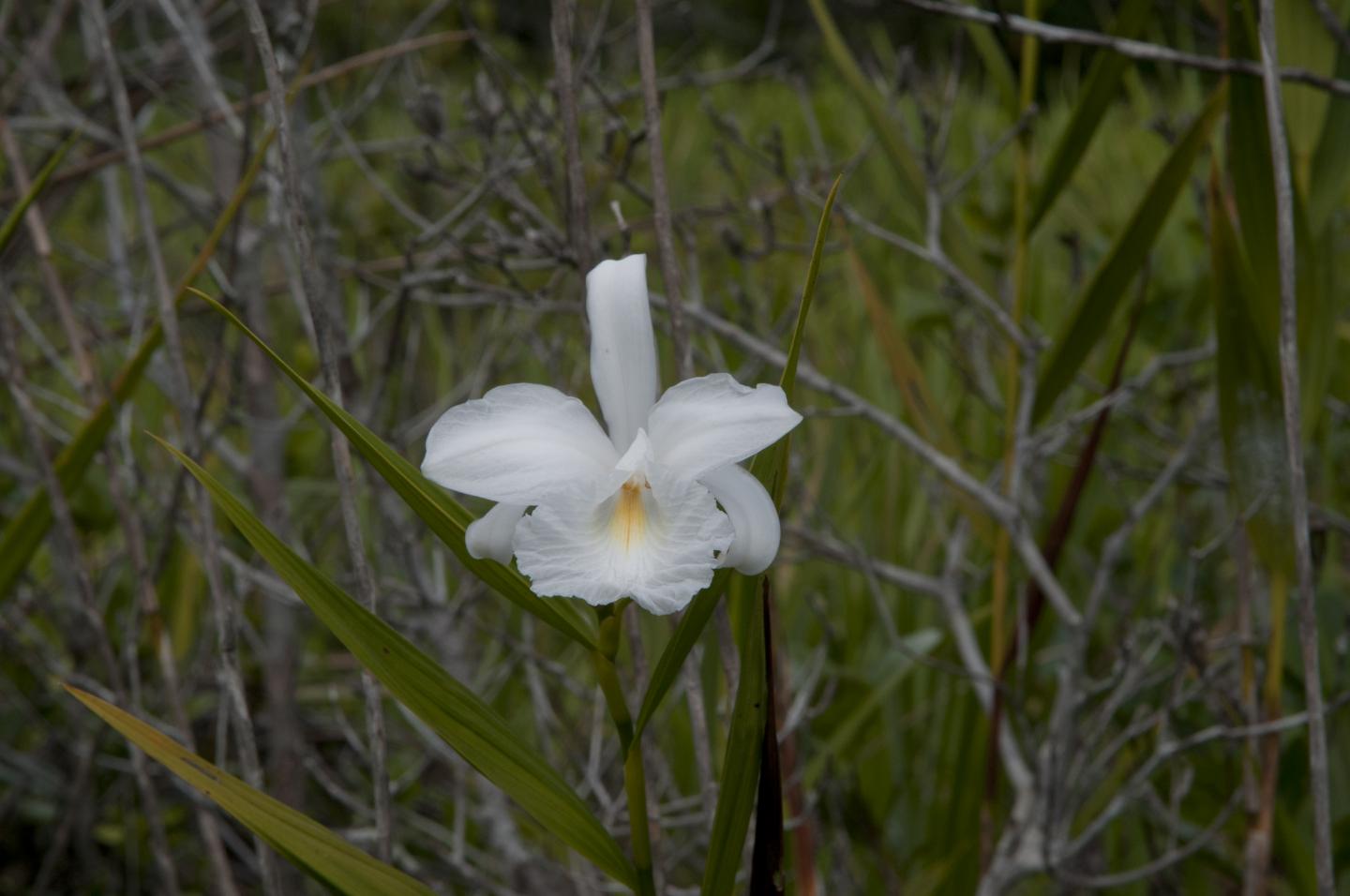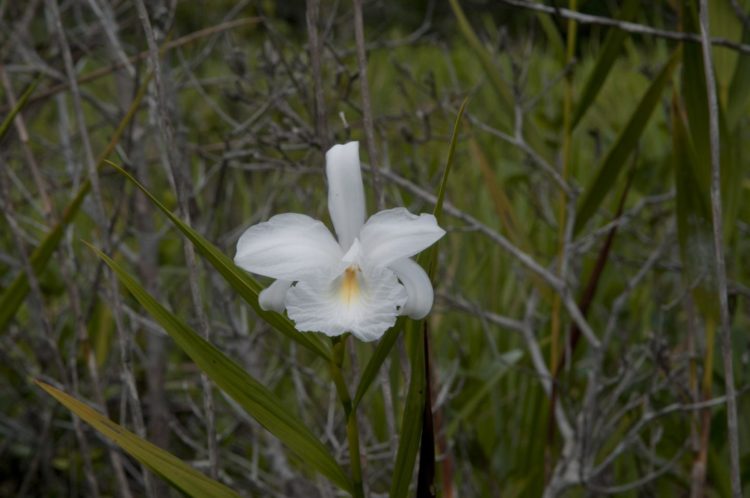Researchers classify 258 protected areas in Brazil as ‘moderately vulnerable’ and 17 as ‘highly vulnerable’ — areas at greatest risk are in the Amazon, Atlantic Rainforest and Cerrado biomes

Credit: Photo: Eduardo Cesar/Revista Pesquisa FAPESP
Brazil contains the largest expanse of tropical ecosystems within protected areas, but a significant proportion of these reserves may be vulnerable to the effects of ongoing global climate change, according to a study supported by São Paulo Research Foundation – FAPESP and published in the journal Conservation Biology.
The study analyzed the vulnerability to climate change of 993 protected areas throughout Brazil, covering all areas of more than 50 square kilometers (km²), including national parks, ecological stations, sustainable development reserves, and indigenous territories demarcated by the National Foundation for Native Peoples (FUNAI).
The principal investigator of the study was David Montenegro Lapola, a researcher at the University of Campinas’s Center for Meteorological and Climate Research Applied to Agriculture (CEPAGRI-UNICAMP) in São Paulo State. The research began during the scientific initiation of Fernanda Sueko Ogawa with a scholarship from FAPESP (https:/
The researchers estimated the resilience of these protected areas and compared the results with climate change projections based on indicators provided by government agencies and previous studies. Of the 993 areas analyzed, 258 were classified as having “medium vulnerability”, and 17 were found to be “highly vulnerable” to climate change.
Methodology
The climate change projections used for the study were based mainly on the regional climate change index (RCCI) developed in 2012 by Brazil’s National Space Research Institute (INPE), a federal government agency. The likely impact of climate change and local adaptation capacity (resilience) were gauged on the basis of data on native vegetation integrity in and around protected areas as well as level of isolation and size.
Estimates of climate-related environmental hazards produced by previous studies were also considered. “For example, extreme climate change could transform vegetation in the Amazon into Cerrado [Brazilian savanna], while the Pampa [grasslands in the south of Brazil and in parts of Argentina and Uruguay] could become forest,” Lapola said.
The climate change projections and hazard assessments were combined with resilience indicators to arrive at the vulnerability classifications. “The classifications are the novelty of this study, enabling us to suggest the strategy best suited to each area,” Lapola said.
The 17 areas classified as displaying high vulnerability to climate change along with low resilience total 20,611 km² and are located in the following biomes: Atlantic Rainforest (7), Cerrado (6), and Amazon (4). The 258 areas with medium vulnerability were considered moderate in terms of both hazard and resilience.
Areas of native vegetation totaling more than 750,000 km² may be at risk in the coming decades.
Impacts
Protected areas are important to mitigate the impacts of climate change. “They represent a large carbon store and maintain ecosystems by preserving pollinators, water resources, and services associated with our basic needs and food security,” said biologist Carlos Joly, a member of the steering committee for the FAPESP Research Program on Biodiversity Characterization, Conservation, Restoration and Sustainable Use (BIOTA-FAPESP) and a coauthor of the study.
On the other hand, the expected variations in temperature and rainfall in the years ahead may affect these areas, as shown by the Brazilian study, the first to produce an analysis focusing on conservation units.
“Research has shown that these changes can affect the distribution of tree species and the survival of certain animal species,” Joly noted.
In addition to their crucial importance to biodiversity, many of these areas are inhabited by traditional populations – indigenous tribes, coastal fishing communities (caiçaras), river dwellers (ribeirinhos) and peasant farmers. More than 80% of the areas classified by the study as highly or moderately vulnerable are indigenous reservations. “This point merits special attention, given the lack of discussion about how these populations can or should manage and adapt to climate change so that they and their way of life can continue to exist,” Lapola said.
Adaptation strategies
The study proposes four adaptation strategies based on previous research. Each class of vulnerability would have a corresponding adaptation strategy. Little or no intervention would be needed for resilient areas at low risk from climate change, but their ecosystems should be maintained to serve as biodiversity repositories for the restoration of other areas.
In areas of medium vulnerability, the focus should be on monitoring and preservation. In the most vulnerable areas, the study suggests the implementation of stronger intervention measures, including species translocation, restoration of degraded vegetation, improved connections between areas, and even management of traditional populations in cases of relatively extreme risk to biodiversity.
For both Lapola and Joly, improving connections between protected areas is crucial to the preservation of all biomes. “Ideally, there should be corridors between protected areas to connect one nucleus to another. This would enhance protection and expand species habitats,” Lapola said.
“For example, a toad adapted to temperatures between 20 °C and 25 °C can travel fast and will want to move if it feels the temperature rising but won’t have a nearby forest environment to move to if the protected area that contains its habitat is small and unconnected to others.”
The study defines a lack of connectivity in terms of an area’s isolation, analyzing native vegetation in a 10 km radius. Deforestation is one of the factors that leads to a lack of connectivity between areas of native vegetation. “So much so that the most vulnerable areas in the Amazon are the areas that are already suffering from deforestation,” Lapola said.
The next steps in the group’s research on the effects of climate change on Brazil’s protected areas will involve more specific analyses of the regional contexts that influence vulnerability and the planning of conservation management approaches.
However, the authors stress the need for action to solve a number of particularly urgent issues that currently threaten protected areas, such as land tenure disputes, illegal occupation, deforestation, fire, maintenance and administrative personnel shortages, and a lack of funds for oversight and management.
“Much remains to be studied, but the article calls attention to the need to include climate change in government planning for protected areas,” Joly said. “Above all, it’s important to raise awareness of the significance of protected areas in an uncertain future climate.”
###
About São Paulo Research Foundation (FAPESP)
The São Paulo Research Foundation (FAPESP) is a public institution with the mission of supporting scientific research in all fields of knowledge by awarding scholarships, fellowships and grants to investigators linked with higher education and research institutions in the State of São Paulo, Brazil. FAPESP is aware that the very best research can only be done by working with the best researchers internationally. Therefore, it has established partnerships with funding agencies, higher education, private companies, and research organizations in other countries known for the quality of their research and has been encouraging scientists funded by its grants to further develop their international collaboration. You can learn more about FAPESP at http://www.
Media Contact
Joao Carlos Silva
[email protected]
55-113-838-4381
Original Source
http://agencia.
Related Journal Article
http://dx.





